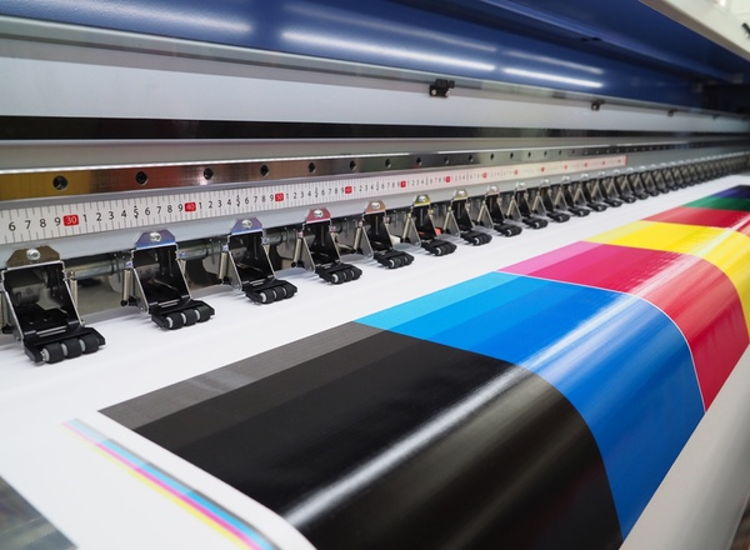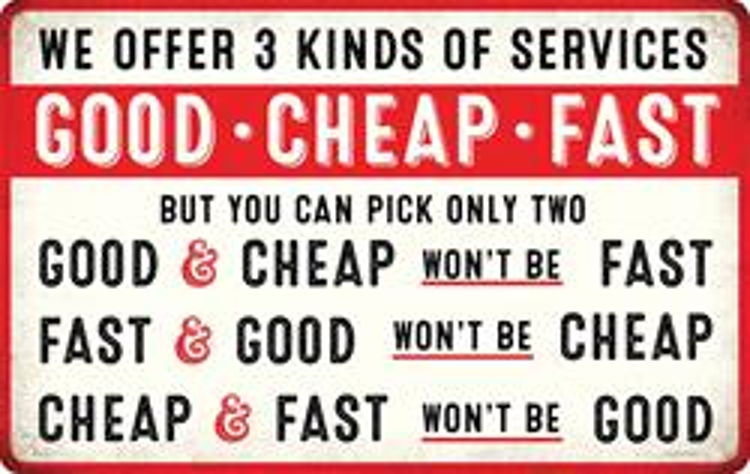Have you ever considered the fact that almost everyone claims to have the best product, the best service, the best support and the best warranty? Not to mention that the list also often includes the best price. I love salespeople, but from my marketing perspective I sometimes look at these ’promises’ and feel they are misleading – and sometimes just propagating pure lies.
If you go to buy a sandwich at the cheapest place in town, you’re unlikely to have it served on a plate, because the business is following a minimalist service model. You’re unlikely to get any follow-up service and, if you have a complaint, you’re unlikely to receive any form of refund or compensation.
The same goes for print hardware. Many buyers are investing in new inkjet printing equipment simply because they believe the marketing statements. The explicitly missing terms like reliability, advanced technology, patents or even just clarity on what you get for your money are simply not there. If the manufacturer is overseas with no local support or staff, it’s unlikely you’ll receive much in the way of post-sales care. Remember, miracles are free, but wishes you pay for.
Take for example the advertised printing speeds in draft mode, or what I like to call ‘garbage print mode’. These speeds are basically useless; they tell you how fast a printer can print ’garbage’. Real production speeds are entirely different; speeds that deliver saleable quality output for your customers. You also need to think about fundamental factors such as the total cost price per square metre (maintenance, ink, substrate, write-off, head degradation, service contracts, operator cost and financial burdens). ROI calculations will keep you busy for a few hours but it’s worth it.
I hear stories of investment purchase decisions based solely on the ink price per litre, without investigating ink consumption, head cost and maintenance waste – all of which need to be considered in the equation. You should check how much ink is purged by the machine each day for cleaning and maintenance and how much is needed on the substrate to get a good quality image, including solid colours.
A fact that many print service providers are unaware of is that the ink cost for printing one square metre on a UV printer compared to a solvent printer is about the same. UV ink is more expensive than a good eco-solvent ink, but less quantity is required to achieve the same result.

Did you know that it’s not the speed of the printer holding you back for fast production, but the drying of the ink? By printing faster than the drying capability you will be creating a mess on the roll after a full day’s printing. This is one of the reasons why UV technology in the large roll-to-roll markets is still growing – the ink is immediately dry after printing and production speeds are fairly high these days.
Alongside the ink costs it’s also important to consider the energy needed, space needed, operator cost and much more.
When looking for a new printer, one of the questions to ask should be: 'Can it print reliably overnight without intervention?' If your printer can run all night without failures, you're winning, but if it requires supervision, that’s an additional cost to bear. The cost of an operator doing nothing for many hours is too high for anybody not to care. If the printer is making money while you are sleeping due to all the advanced technology in the printer, you will be happy. You need to be aware of things like error reporting, auto cleaning, nozzle-out detection and other features. These will provide reassurance that it’s a reliable piece of hardware doing its job.

So, back to the original question: does the same go for cheap printers and service and how can you expect good service for zero money? This is a great sign I’ve seen in a car service workshop:
We offer three kinds of service
GOOD-CHEAP-FAST
But you can only pick two!
Good & Cheap won’t be Fast
Fast & Good won’t be Cheap
Cheap & Fast won’t be Good
This is a great illustration of the real world of service; don't expect the best service if you pay nothing. Service and post-sales support should be what has been promised by your vendor and this costs money. It doesn’t have to be the best, but you need to know what you are getting for the price.
Reputable hardware technology firms are always moving ahead with innovation, applicable to their industrial machines and to their entry level products. They are spending huge amounts on R&D to make their products better. Like pre-emptive maintenance – an innovation which is proving really useful. Just imagine: a service engineer arrives at your print shop and asks to replace a specific part that will break down in the next eight hours of production. The vendor knows this because the printer is connected via the internet to a central hub which shows what is happening to all printers worldwide. If multiple printers are showing this failure, your printer is likely to fall victim too. Replacing it before the failure happens gives you better uptime – the new magic word in the print industry.
The result: reliable, fast and high-quality printers.
In our industry we have been struggling with these facts for some time now. Many leading manufacturers are only now publicising production speeds. This is a big step away from the exaggeration of facts that many were providing for so long. These achievable speeds deliver the right quality and reliability that can be sold to your customers. Production speeds can finally help you calculate margins before buying the hardware. When talking to your vendor, ask about it.
There are also a few manufacturers demanding that you need to use their original inks. This is not because they make a bigger profit, but to guarantee your production and save you money in the long term. On first impression, original ink is more expensive, but you have a full warranty and service agreement to back this up. Of course, it’s important to look not just at the base ink price but at the bigger picture - see it as an extra insurance policy for your print production.
No service, no sale
If the manufacturer doesn’t offer service, then it’s up to you to find a better alternative. Just don't try an alternative ink before you calculate the difference. Remember the cost of ink is not the biggest expense – substrates, time, staff and customer dissatisfaction are costlier concerns than the initial cost of more expensive inks. Do remember that alternative ink solutions (also known as third party inks) are available, and they are not all bad. In fact, most alternative inks are as good or sometimes better than OEM inks – they have to be in order to be a comparative solution. Speciality ink businesses have developed inks that provide different performance or special colours, so don't presume all alternatives are cheap and damaging. In fact, many of the top ink manufacturers sell to the hardware vendors, as making these speciality inks is not easy. The days of cheap, low-quality imported inks is long gone.
So, next time you want to buy a production printer, think about the full picture, not only the cost, speed and ink price. If you’re careful, your next printer might just be the solution you have been looking for.
If you are still hesitant, call in a consultant to guide you through the maze and ensure you get a good ROI on your investment. As a consultant, I don't design products, I evaluate them. I consider all features such as overnight printing, ink cost maintenance ratios and much more – the total ROI for your company – and yes, it’s different for each printing company in Europe and the UK.
Enjoy print – and the margin.
Mike Horsten
Consultant and freelance writer
TexSmart.nl





